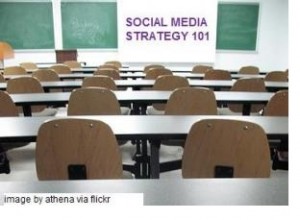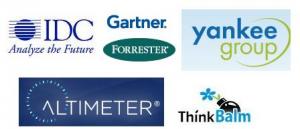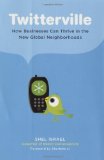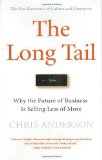Did Mashable Break Twitter Button Embargo?
I just noticed a couple of tweets mentioning that Twitter will be announcing a Twitter button, most likely tomorrow. What I found interesting is not the news, but the image that accompanied the articles. The images clearly state (the above is one of several in the article):
Twitter Confidential – subject to NDA
This leads me to ask, did Mashable break an embargo or did someone inadvertantly send the image without obtaining one first? If the former, how does this impact how PR professionals approach blogs as part of a communications plan?
With TechCrunch publicly stated that they will no longer honor embargos, PR professionals have to be more vigilant of the policies and, in some way, integrity of the outlet and reporter/bloggers you’re contacting.
I don’t advocate getting every reporter to sign a multi-doc NDA, but by the same token, I don’t think a verbal NDA may suffice anymore. What do you think?
Now, if I were more cynical, maybe Twitter meant to have this leaked =) Mashable, would love to hear from you on this.
Social Media Marketing Strategy 101: Definitions
 I had an interesting conversation with someone a few weeks ago about the definition of social media and social media marketing. I think it’s important to explore the definitions to ensure that we’re on the same page.
I had an interesting conversation with someone a few weeks ago about the definition of social media and social media marketing. I think it’s important to explore the definitions to ensure that we’re on the same page.
I posted this question to my different social networks and here are couple of responses that came back:
I would define social media and social marketing, as an attempt to connect with a niche portion of the population, which utilizes digital channels of communication. These individuals were formally unavailable and couldn’t have been harnessed through traditional marketing avenues. This day and age, it has become increasingly important to reach out to these individuals, especially in light of the expansion of social networking. Consequently, social platforms now grant businesses the ability to accomplish this with ease. By establishing more transparency and openness, companies can ultimately harness potential customers that were previously unattainable. – Ryan Schoenefeld via LinkedIn
akornblattSocial Media are the tools, Social Marketing is what you use Social Media for.
akornblatt Social media are the tools used in social network and social marketing, which are both unique as well
Social Media and Social Marketing Defined – Simply
While Wikipedia provides a fairly academic definition of social media, here’s my simple definition: Social media is when you and I use online applications, such as Twitter, LinkedIn, Facebook, etc. to create, share, and distribute content (e.g. Video, blog posts, etc.).
If Social Media is the tools, then Social Media Marketing is the toolbox. From my perspective, Social Media Marketing leverages social media to achieve key marketing objectives and engage in conversations with key constituents.
Conclusions
Based on these definition, my goal with these series of posts is to explore how organizations can leverage a social media marketing strategy to achieve marketing and communications goals. Like all marketing strategies, this requires different components to come together under this umbrella, such as public relations, lead generation, customer relations, analyst relations and more. Hence, I am changing this from “Social Marketing Strategy 101” to “Social Media Marketing Strategy 101.”
Do you agree or disagree? Let me know.
Other Posts in the Series
1. Social Media Strategy 101: Are You Ready?
2. Social Media Strategy 101: Which Persona Helps Tell Your Story?
New Breed of Analysts
 The landscape has drastically changed for analyst relations over the past few years. When I first started PR, there were just a handful of analyst firms with a few independent firms. In the end, you knew if you had briefings with Yankee Group, Gartner, Forrester, Jupiter and Meta Group, you had your bases covered. And for the company seeking to launch with a bang, Chris Shipley and the DEMO conference was the standard.
The landscape has drastically changed for analyst relations over the past few years. When I first started PR, there were just a handful of analyst firms with a few independent firms. In the end, you knew if you had briefings with Yankee Group, Gartner, Forrester, Jupiter and Meta Group, you had your bases covered. And for the company seeking to launch with a bang, Chris Shipley and the DEMO conference was the standard.
Now, there are more niche analyst groups and consulting firms that wield influence on a variety of topics. And the responsibility for managing AR no longer sits with PR or marketers, it’s extended to product management & marketing as well as all levels of the executive team.
But all is not gloom and doom. With the growth of niche influencers, there has been increased openness in research availability and knowledge. I also see this new breed of analysts having the potential to change how things have been done to date.
Quicker to Identify, Evaluate and Research New Technology Segments
With larger analyst firms, research areas are clearly defined to address the majority of incoming customer inquiries. Unless a nascent technology emerges as a definable trend, such as with increased customer interest, a traditional analyst firm may not formally delve further into that space. This is where a smaller analyst firm or consultancy has an advantage to identify, evaluate and research a new technology segment.
Open Garden Approach to Research and Thought Leadership
In addition to consulting clients, analyst firms charge hundreds and thousands of dollars to non-customers for research reports. To me, this is similar to the “walled garden” approach during the early days of the Internet when “membership” provided you access to valuable content.
For the most part, this metaphor is being replaced by free content which has challenged many industries, especially in publishing. While I don’t believe this will impact the revenue model for analyst firms, I do find it interesting that some firms – specifically The Altimeter Group* and ThinkBalm – allow individuals to access their reports free of charge.
Embrace of Social Media
This leads into the final area of change for analyst firms. The increased use of social media, such as blogs, twitter and event virtual worlds (for example ThinkBalm’s The Distillery in Second Life), further increases these analysts’ awareness in the market place. And for the savvy marketer and PR practitioner, new avenues to engage with these analysts not previously possible.
Conclusion
A new breed of analyst is emerging. They tend to have an “open garden” approach that engages people in conversations. And without a larger organizational structure, they have more freedom to explore different technology segments – both established and emerging.
The challenge for folks like you and me is determine which of these new analysts have the insight and business acumen to emerge as industry influencers. Engage the right ones and you’ll have an opportunity to shape the conversations around your industry.
For those of you overseeing analyst relations, do you agree or disagree?
* Read Jeremiah Owyang’s blog posting about the Altimeter Group Approach (two-thirds down the page).
SPINdustry – Discrediting PR in 30 Minutes
I was watching TV over the weekend with my husband and happened to be on the E! Channel. We started watching this show called SPINdustry, which has the “inside” look of public relations. I don’t know about you, but I thought this show did more to harm to PR than enlighten what the industry is about. Here are three things I took away:
1. PR People are Bitchy: If you were to watch this show, you would think that everyone is backstabbing and looking out for only one’s career.
2. No Strategy Required: In this episode, the “gals” were running around putting together an event in one day. It just seemed that there was no strategy for the work beyond getting the big name stars to use their client’s product so it would appear in the magazines the following day.
3. PR Executives Just “Hob Nob”: The two main executives seemed to do no heavy lifting besides meeting with clients, having lunch and showing up at the venue right before it started.
It’s unfortunate that a show like this will be seen as being representative of public relations. While the client’s product was photographed in multiple consumer magazines, I’m unsure what the true objective of the PR program was. The client’s messages and objectives seemed to get lost in the process.
Maybe this is how entertainment PR is done and how it dramatically differs from technology PR. I would love any insight from someone from the entertainment industry. Is this show TRULY representative of your industry?
The Rehabilitation of Michael Vick’s Image
 Every Sunday, my husband and I watch 60 Minutes. While most of the stories are reruns this summer, 60 Minutes aired the first public interview with Michael Vick who recently left prison on dog fighting and cruelty charges. Check out the video and article here. I’m a huge football fan and was surprised that the Philidelphia Eagles took a chance by signing Vick earlier this week.
Every Sunday, my husband and I watch 60 Minutes. While most of the stories are reruns this summer, 60 Minutes aired the first public interview with Michael Vick who recently left prison on dog fighting and cruelty charges. Check out the video and article here. I’m a huge football fan and was surprised that the Philidelphia Eagles took a chance by signing Vick earlier this week.
While watching the interview, I couldn’t stop thinking about the strategy that Vick and his team (lawyers, agency and brand/PR folks) are using to manage and rehabilitate his reputation.
- 60 Minutes Interview: Lends credibility that Vick truly understands the gravity of hissituation and previous decisions and his true intent/desire (?) to redeem himself.
Association with Humane Society: With the Humane Society’s willingness to believe in Vick’s resolve to atone for his mistakes, the hope is that fans will also take that chance on him as well.
Controlled Public Appearances: Since being released, Vick has been very careful about his public image and statements. To my knowledge, he’s been dressed conservatively with a serious demeanor, further emphasizing that he is not the same person he was 2 years ago.
Conclusions
If Vick is truly sincere, I think these efforts will eventually have their desired affect with most out there – let’s be honest, a certain segment of animal lovers will never forgive him for his actions. There will be a healthy level of skeptism that Vick hasn’t changed and is just implementing a very sophisticated PR strategy to make money.
Regardless of which camp you belong in, I do believe that he is executing the right strategy to start down the road to redemption. What do you think?
Virtual Events – New Opportunity for Public Relations
Note: This has been cross-posted on my previous former employer’s company’s blog, which . Furthermore, my company offers virtual events solutions.
Over the past year, virtual events (e.g. virtual conference, virtual tradeshow, etc.) have gained in popularity due to the economic recession and budget restrictions. As more conferences consider a virtual companion to a physical conference or even going virtual all together, this represents a new arena for public relations professionals:
- – No longer can you stand outside the press room and grab journalists for an impromptu interview
- – You don’t have to walk or run a mile to get from one meeting to another with your client close behind
- – What? – no late night cocktails with the reporter listening to a band from the 80’s?
How Public Relations Can Take Advantage of a Virtual Event
All kidding aside, I think this is something that will become more commonplace. Here are my recommendations the next time your client attends an event with a virtual component:
* Staff the Booth: In a virtual world, there are no limitations on the number of booth staff. Your team can now staff a virtual booth alongside your customer. You will get to read what customers and prospects are seeking, which will make you more informed about your customer’s business. When a media or analyst comes to the booth, you would be the go-to person.
* Include Media-Ready Content in the Booth: Depending on the virtual event, the client will have 3-5 tabs for content. Recommend that one tab includes information that would be valuable to press and analysts, such as fact sheets, company backgrounder, link to the corporate blog, link to your online newsroom, and other resources.
* Participate in the Networking Lounge and Auditorium Chats: Most of the participants are in these two locations. Participate in these discussions as reporters may be asking questions of attendees, seeking resources, or participating in a subject-matter discussion. If the topic discusses your company or product, consider inviting the reporter to a private chat or to come by the booth to learn more. As everything, just make sure to be relevant to the reporter.
* Hold a “Virtual Press Conference” in Your Booth: Like a physical event, you can schedule time to have a “virtual press conference” for an announcement and Q&A with your executives. The benefit is that you can potentially drive more participants as there are not travel requirements. The Q&A would take place via the group chat, recognizing that this is visible to everyone. And remember, this takes the same amount of preparation as a normal press conference!
* Invite Press/Analyst to the Virtual Event: Virtual conference and tradeshows are fairly uncommon. If this is one of the first events in your industry, then press and analysts may be curious to learn more. Take this opportunity to invite them to the virtual event and discuss why your company is participating in the virtual trade show. Just be aware that registration is required to attend. Since most of this is free, consider setting up email aliases, e.g. [email protected], to manage reminders directly with the reporter. Otherwise, have the reporter sign up directly.
Conclusions
In the end, a virtual conference or trade show represents an opportunity for public relations. I’ve heard of a few instances where press and analysts have been invited to invitation-only events online, I do anticipate this to increase as larger, more public conferences consider virtual components. When this happens, will you be prepared?
B2B Marketing Zone – Great Resource
I wanted to point everyone to a new resource, B2B Marketing Zone, that launced last week. Brought together by Tom Pick of The Web Market Central and Tony Karrer of eLearning Technology, the website brings together top bloggers and topics on B2B marketing into one place.
I was honored to be asked to participate. I recommend taking a look – there are a lot of topics relevant to B2B marketers. And I hate to say this, but for PR folks out there, you can research relevant marketing-related bloggers in one place. Just one word of advice, READ the blogs before pitching!
Any other resources to consider?
About
Favorite Service
Recent Comments
- on Going Virtual Isn’t Necessarily the Answer to Replacing Your Physical Events
- on Going Virtual Isn’t Necessarily the Answer to Replacing Your Physical Events
- on Going Virtual Isn’t Necessarily the Answer to Replacing Your Physical Events
- on Going Virtual Isn’t Necessarily the Answer to Replacing Your Physical Events
- on Going Virtual Isn’t Necessarily the Answer to Replacing Your Physical Events
Ads by Google
Favorite Books
Marketing Blogs
PR Blogs
- KD Paine's Measurement Blog
- Micro Persuasion
Virtual Events & Meetings Blogs
- Cisco Virtual Environments
- It's All Virtual
- The Webinar Blog
- Virtual Edge Institute

 Follow
Follow

 Cece Salomon-Lee is director of product marketing for Lanyon Solutions, Inc. and author of PR Meets Marketing, which explores the intersection of public relations, marketing, and social media.
Cece Salomon-Lee is director of product marketing for Lanyon Solutions, Inc. and author of PR Meets Marketing, which explores the intersection of public relations, marketing, and social media. 


